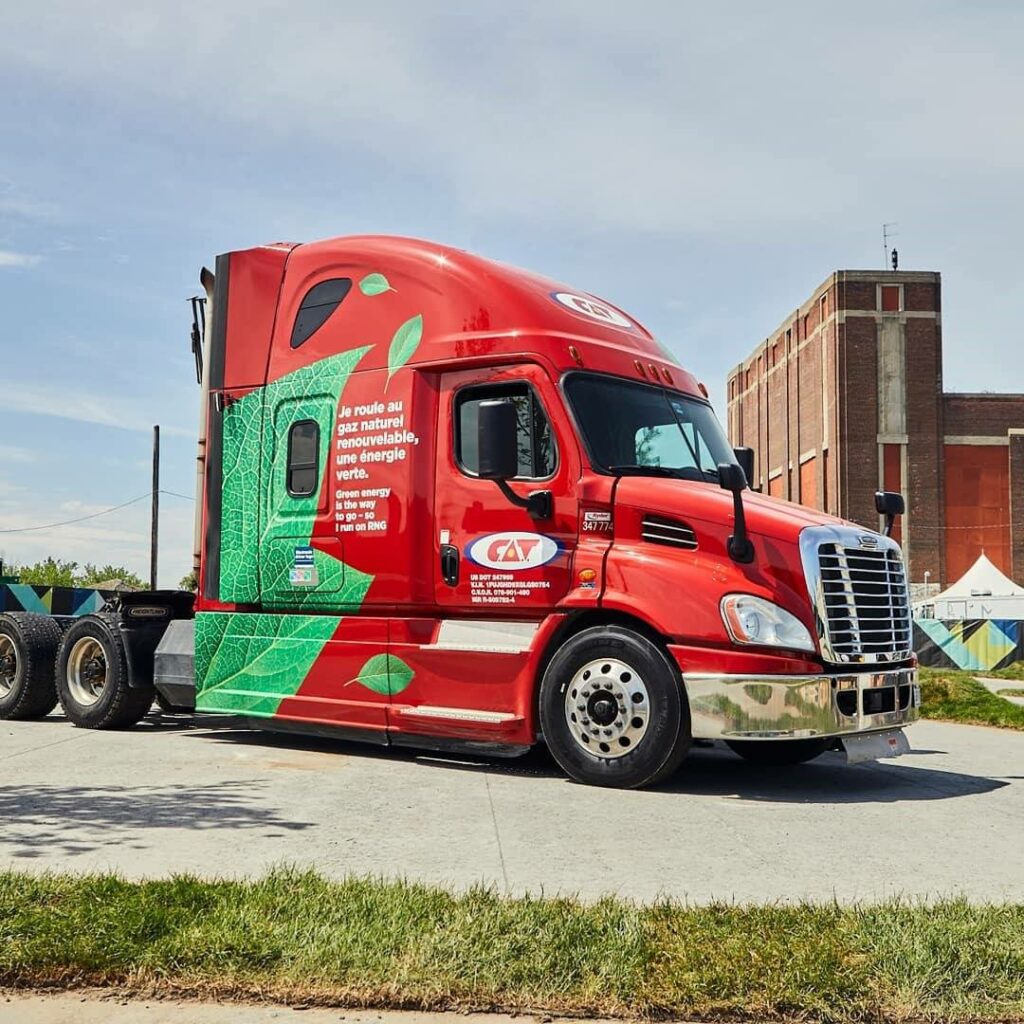Near Zero: Natural gas can help fleets meet decarbonization objectives
As the trucking industry embarks on its transition to zero emissions, there are readily available and easy to implement technologies that can get it close to that target.
Take for example, natural gas. A fleet powered with renewable natural gas can even be carbon negative today, since the fuel is created from methane that would otherwise be released into the atmosphere.

“The fuel is cheaper. It gives fleets the ability to reduce their emissions without any increases costs – maybe with some savings and maybe with an opportunity to generate some [carbon] credits,” said Bruce Winchester, executive director of the Canadian Natural Gas Vehicle Alliance. He was speaking at a Greentech panel at Truck World April 19. “None of the other technologies really offer that.”
Natural gas is getting renewed interest after Cummins announced plans to bring to market a 15-liter natural gas engine, more capable of meeting the Canadian industry’s power demands than the current 12-liter.
15-liter CNG engine
“The 12-liter product Cummins had in the marketplace didn’t quite meet muster,” Winchester said. “The X15N is significantly better. It’s very, very similar to diesel performance and we’re starting to hear how great the engine actually is.”
One of the first Canadian fleets to get its hands on the new 15-liter natural gas engines is C.A.T. It already had deployed about 100 trucks with the 12-liter engine.
“The 15-liter has been performing great,” said Jonathan Royal, senior director of asset management for C.A.T. “So far from what we’ve seen, the horsepower and torque is comparable to diesel.”
In addition to providing more power, the fuel economy is equal to its smaller sibling, Royal said, and oil intervals have been nearly doubled. C.A.T. runs its natural gas trucks between Quebec City and Laredo, Texas. It worked with a gas supplier to ensure a fueling network was in place along that route.
Fueling simple
The biggest challenge related to the equipment is staying on top of maintenance schedules. “You’ve got to be careful with it,” he said, noting natural gas engines are less forgiving when scheduled maintenance is overlooked. “If you do, these trucks perform great.”
Fueling the trucks is simple, and, adds Royal, “The biggest positive is when you get to the station there’s often no line. You can refuel right away. It doesn’t smell. You don’t get leaks on your boots and gloves. You just take the nozzle and hook it to the tank.”
Kyle Cooper, business development – low carbon transportation solutions with Enbridge, is also seeing increased interest in natural gas as a trucking fuel. He said the launch of the 15-liter Cummins is “a massive signal to the industry that we are here to stay, we’ve invested in this technology, and we see natural gas as a future solution for decarbonizing the industry.”
When fueled by renewable natural gas, trucks actually act as “carbon sinks” said Winchester. However, he acknowledged there are some tailpipe emissions, even if the overall carbon output is negative. Converting to natural gas enables fleets to generate carbon credits which can then be sold.
Royal, however, acknowledged thar RNG is priced at a premium. “In today’s world, RNG is quite expensive. But RNG makes total sense at least for the next decade.”
The additional costs of RNG comes from the process required to clean it to the needed purity. It’s then blended with conventional natural gas in the pipeline, however, Cooper said. At a molecular level, RNG performs exactly the same as conventional natural gas.
Shop retrofits
Asked what fleets need to know about converting to natural gas, Royal said “It’s a project in itself. You have to think about not only buying the truck and spec’ing the truck properly, but spec’ing the right tanks. Where are your lanes? Is there good support on the road? Is there an adequate fueling network to service your lanes? You have to train your technicians, train your drivers. You really have to map out and calculate the ROI on it…all variables need to be mapped out before launching yourself into that new adventure.”
Existing shops may have to be retrofit, their ventilation systems adapted. Gas-fired heating is a no-go and even the electrical conduit may need to be adapted. This can be inexpensive on a new build, but costly when retrofitting an existing shop.
“If you do things right, it’s a technology that is working and has been proven,” Royal said. “CNG and RNG is the only alternative energy available on the market that we can apply now.”
Have your say
This is a moderated forum. Comments will no longer be published unless they are accompanied by a first and last name and a verifiable email address. (Today's Trucking will not publish or share the email address.) Profane language and content deemed to be libelous, racist, or threatening in nature will not be published under any circumstances.
Is there any development in smaller engine sizes as say for Straight truck use and what would the forecast be for available fuel stations in the Toronto GTA area for refueling